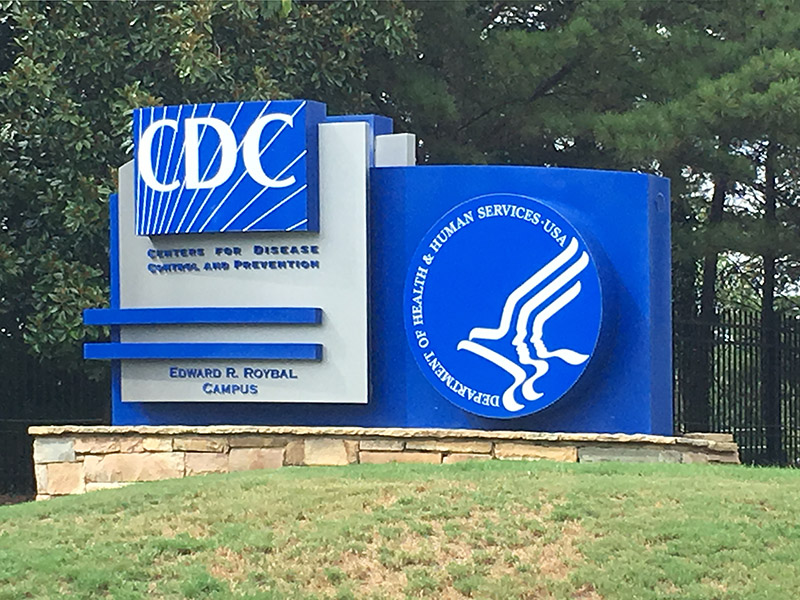CDC Calls for “Urgency” in Combating HIV/AIDS
As the United States marks World AIDS Day, the CDC is calling for renewed urgency and financial commitment to combating the spread of HIV.

The Centers for Disease Control and Prevention (CDC) is calling for “urgency” and demanding a “collective commitment” to ending the HIV epidemic in America, noting that the United States currently stands at a crossroads when it comes to curbing the spread of HIV.
In a “Dear Colleague” letter released in advance of December 1, which is recognized as World AIDS Day, Dr. Robyn Neblett Fanfair — the captain of the U.S. Public Health Service and the acting division director of the Division of HIV Prevention at the CDC’s National Center for HIV, Viral Hepatitis STD, and TB Prevention — urged health advocates not only to reflect on past progress in combating the disease, but take a more proactive approach in the future.
“From the earliest days of the HIV epidemic, passionate, thoughtful action by advocates, communities, clinicians, and public health officials has helped to drive decades of scientific and clinical advances,” Fanfair wrote.
Among the successes noted in Fanfair’s letter are the strides the United States made in preventing the transmission of HIV from HIV-positive pregnant women to their children between 2010 and 2019.
During that period, the number of cases of mother-to-child transmission dropped to fewer than one case per 100,00 live births, and the transmission rate dropped below 1%, according to a recent CDC-led study.
Fanfair also cites CDC data showing that the incidence of HIV has dropped in recent years, with the estimated number of HIV infections in 2021 decreasing by 12% compared to 2017.
This was in part driven by a decrease in more than one-third of all new HIV infections among gay and bisexual men between 13 and 24 years old.
The decrease has been attributed to increased accessibility of pre-exposure prophylaxis (PrEP), a biomedical intervention that successfully stops transmission of the virus.
A separate CDC report containing preliminary data appears to show a significant uptick in the number of people connected with PrEP, with 36% of the estimated 1.2 million people in the United States believed to be at higher risk of HIV infection based on behavioral characteristics and sex practices, receiving prescriptions for PrEP.
That 36% figure is significantly higher than the last recorded figure, from 2019, when only 23% of people eligible for PrEP were taking it.
However, those statistics also indicate that there are significant disparities in PrEP use, with communities of color and women who might benefit from the medication lagging behind other groups in terms of uptake.
Despite past successes, Fanfair warned that community engagement — focusing on a whole-person approach to connect members of at-risk populations with PrEP and other interventions — remains crucial to achieving the goals set by the U.S. Department of Health and Human Services’ “Ending the HIV Epidemic in the U.S.” initiative.
That initiative seeks to reduce the number of new HIV infections by 90% (compared to their levels in 2019, when the initiative began) by 2030.
“For [the initiative] to be successful, the interventions must be brought to scale to address inequity and eliminate longstanding barriers to care that requires a significant and sustained infusion of new resources,” Fanfair wrote. “However, HIV prevention resources have not kept pace with needs, and allocated funding has consistently fallen short of former and current Presidents’ requests for funding the EHE initiative.”
Fanfair argued that significant financial investment in HIV prevention at present will eventually cut costs in the long term, noting that achieving the goals of the “Ending the HIV Epidemic” initiative by 2030 would “prevent over 255,000 HIV cases and save over $100 billion in direct lifetime medical costs.”
But Fanfair’s assertions are likely to rankle some in the political establishment, particularly deficit hawks and conservatives focused on significantly cutting domestic spending programs, who may see HIV prevention-related initiatives as no longer necessary or a waste of money.
Still others, particularly those who rail against “wokeness,” may take offense at Fanfair’s assertion that curbing the spread of HIV “hinges on our ability to bring to scale innovative approaches designed to address disparities and their drivers, including HIV stigma, racism, and other social and structural determinants of health.”
According to CDC estimates, about 1.2 million people in the United States are living with HIV, and 1 in 8 of those people aren’t aware of their serostatus due to a variety of factors, including lack of regular medical care, hesitancy or lack of awareness around getting tested, or the mistaken belief that they aren’t at risk of HIV.
Even though the number of new infections has declined overall, tens of thousands of Americans seroconvert, meaning acquire HIV, every year.
According to the CDC, based on data from 2021 — the most recent year for which there are statistics — there were 32,100 estimated new HIV infections. Seventy percent of those infections occurred among men who have sex with men, while 22% occurred among people engaging in heterosexual sex, and 8% occurred among intravenous drug users.
More than half of all new infections were in the American South, a region that spans from Maryland in the northeast and all states south of the Ohio River, reaching as far west as Texas.
Additionally, about two-thirds of men who have sex with men and more than three-quarters of heterosexuals who were diagnosed with HIV in 2021 were either Black or Hispanic, demonstrating a significant racial disparity among those who seroconverted through sexual contact.
White people constituted almost half of all new infections among intrevenous drug users.
“On the 35th anniversary of World AIDS Day, we stand at a crossroads,” Fanfair concluded. “Without sufficient investment in HIV prevention, we risk turning back the clock on the progress we’ve worked so hard as a nation to achieve.”
To assist in educating people about HIV testing, treatment, and prevention, the CDC has provided several online resources. For access to information about free, fast, and confidential testing options, visit www.gettested.cdc.gov.
Individuals wishing to pursue self HIV-testing can learn more about at-home tests and where to pick them up at together.takemehome.org.
For information about ways to access PrEP, visit preplocator.org.
Support Metro Weekly’s Journalism
These are challenging times for news organizations. And yet it’s crucial we stay active and provide vital resources and information to both our local readers and the world. So won’t you please take a moment and consider supporting Metro Weekly with a membership? For as little as $5 a month, you can help ensure Metro Weekly magazine and MetroWeekly.com remain free, viable resources as we provide the best, most diverse, culturally-resonant LGBTQ coverage in both the D.C. region and around the world. Memberships come with exclusive perks and discounts, your own personal digital delivery of each week’s magazine (and an archive), access to our Member's Lounge when it launches this fall, and exclusive members-only items like Metro Weekly Membership Mugs and Tote Bags! Check out all our membership levels here and please join us today!
























You must be logged in to post a comment.